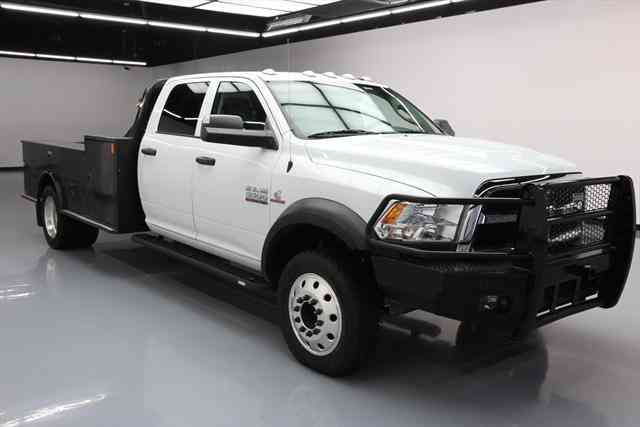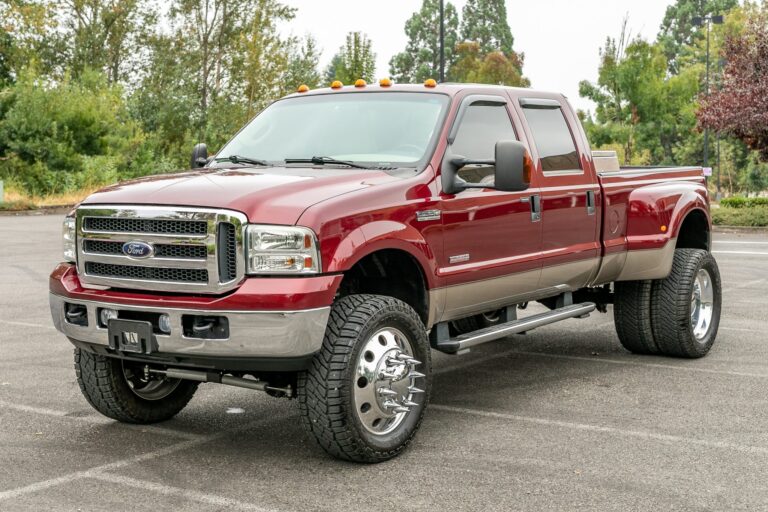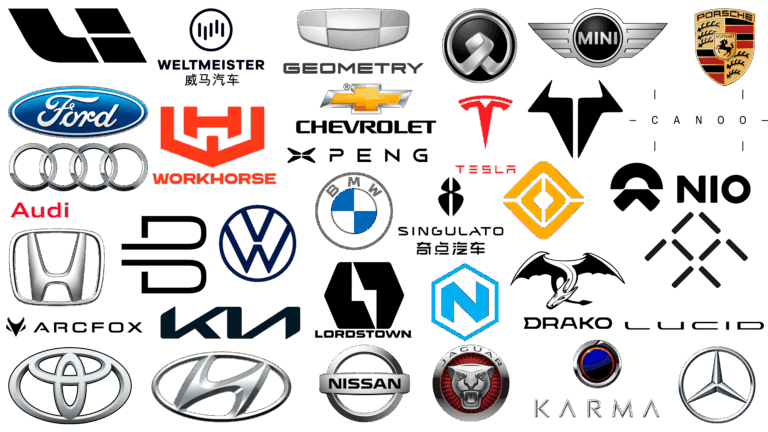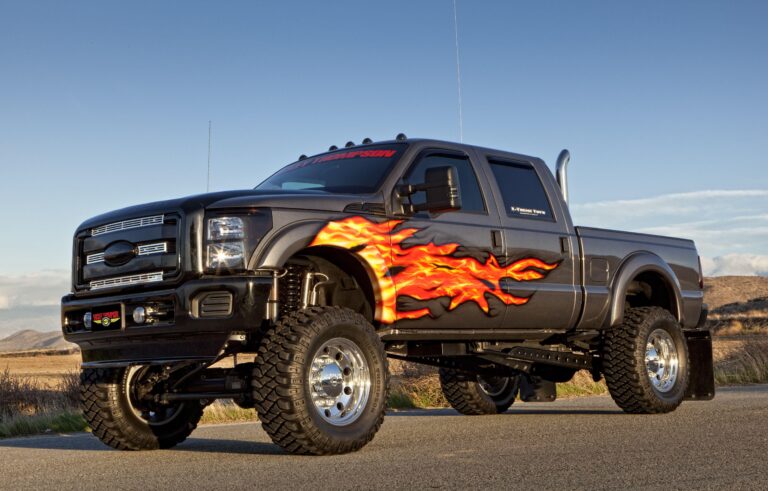5500 Dually Trucks For Sale: Your Ultimate Guide to Heavy-Duty Hauling
5500 Dually Trucks For Sale: Your Ultimate Guide to Heavy-Duty Hauling cars.truckstrend.com
In the world of commercial transportation, heavy-duty towing, and specialized hauling, few vehicles command as much respect and capability as the 5500 dually truck. More than just an oversized pickup, the 5500 dually represents the pinnacle of consumer-grade (though often commercial-applied) chassis cab design, engineered for immense payloads and incredible towing capacities. If you’re a hotshot hauler, an RV enthusiast with a colossal fifth-wheel, a construction professional, or a business owner needing a robust mobile platform, understanding the nuances of 5500 dually trucks for sale is paramount to making a sound investment. This comprehensive guide will navigate you through everything you need to know about these formidable workhorses.
Understanding the 5500 Dually Class: Power and Purpose
5500 Dually Trucks For Sale: Your Ultimate Guide to Heavy-Duty Hauling
At its core, a 5500 dually truck is a heavy-duty chassis cab vehicle equipped with dual wheels on the rear axle, significantly enhancing stability and load-bearing capability. Unlike its lighter 2500, 3500, or even 4500 counterparts, the 5500 class steps firmly into the commercial vehicle realm, often classified as a Class 5 truck with a Gross Vehicle Weight Rating (GVWR) typically ranging from 17,500 to 19,500 pounds. This higher GVWR allows for far greater payload capacity and, when combined with a suitable trailer, impressive Gross Combined Weight Ratings (GCWR) that can exceed 30,000 pounds.
Major manufacturers like Ram (Ram 5500), Ford (F-550 Super Duty), and Chevrolet/GMC (Silverado/Sierra 5500HD) produce these trucks, each offering their proprietary diesel engines (Cummins, Power Stroke, Duramax, respectively) paired with heavy-duty automatic transmissions (Aisin, TorqShift, Allison). These powertrains are purpose-built for sustained heavy loads, offering incredible torque and durability. Often sold as a "chassis cab," the 5500 provides a bare frame behind the cab, allowing owners to customize it with various upfits like flatbeds, service bodies, dump beds, wrecker bodies, or specialized commercial equipment.
Why Choose a 5500 Dually? Benefits and Applications
The decision to invest in a 5500 dually is driven by specific, demanding requirements that lighter trucks simply cannot meet.
- Unmatched Towing and Hauling Capacity: This is the primary draw. 5500 dually trucks are designed to confidently pull massive gooseneck or fifth-wheel trailers, from multi-car haulers and heavy equipment trailers to the largest luxury RVs. Their high payload capacity also means they can carry substantial weight directly on the truck chassis, ideal for service bodies loaded with tools or materials.
- Superior Stability and Control: The dual rear wheels provide a wider footprint and increased tire contact with the road, dramatically improving stability, especially when towing or hauling heavy, swaying loads. This translates to safer and more confident driving, reducing fatigue over long hauls.
- Durability and Longevity: Built with heavier-duty components throughout – from the frame and axles to the suspension and braking systems – 5500 dually trucks are engineered for commercial use and a longer lifespan under strenuous conditions. They are designed to work hard, day in and day out.
- Versatility Through Custom Upfits: The chassis cab configuration is a significant advantage. It allows businesses and individuals to tailor the truck precisely to their needs. Whether you need a mobile welding rig, a specialized agricultural sprayer, a heavy-duty tow truck, or a dedicated hotshot vehicle, the 5500 chassis provides a robust foundation.
- Professional Image: For many businesses, a 5500 dually projects an image of serious capability and professionalism, signaling to clients that you have the right equipment for the job.

Key Considerations When Buying a 5500 Dually
Purchasing a 5500 dually is a significant investment. Careful consideration of several factors will ensure you get the right truck for your needs and budget.

- New vs. Used:
- New: Offers the latest technology, full warranty, and complete customization options for upfits. Higher initial cost but peace of mind.
- Used: Significant cost savings, especially if depreciation has taken its toll. Many used 5500s are already upfitted, potentially saving you time and money. However, requires thorough inspection and understanding of past usage.

- Engine and Drivetrain: Diesel engines are standard for their torque and fuel efficiency under load. Research the specific engine (Cummins, Power Stroke, Duramax) and transmission (Aisin, TorqShift, Allison) known for reliability and performance in the heavy-duty segment. Consider axle ratios – a higher numerical ratio (e.g., 4.10, 4.30) provides more torque for towing but sacrifices some unloaded fuel economy.
- Chassis Cab Configuration:
- Cab Type: Regular Cab, Crew Cab, or Mega Cab (Ram) impacts passenger capacity and interior space.
- Cab-to-Axle (CA) Length: Crucial for matching the truck to your desired upfit. Different CA lengths accommodate different body sizes.
- Frame Strength and Features: Ensure the frame rails are robust enough for your intended application. Some models offer specific frame treatments or Power Take-Off (PTO) options for auxiliary equipment.
- Gross Vehicle Weight Rating (GVWR) and Gross Combined Weight Rating (GCWR): These are the most critical numbers. Ensure the truck’s ratings exceed your maximum anticipated loaded weight (truck + cargo) and combined weight (truck + cargo + trailer + trailer cargo). Do not exceed these ratings for safety and legality.
- Upfits and Customization: Decide if you need a bare chassis to build your own custom solution or if a pre-existing upfit (flatbed, service body, dump body) meets your requirements. Factor in the cost and time for any necessary modifications.
- Maintenance and Operating Costs: These trucks are not cheap to run. Diesel fuel is often more expensive, tires are larger and more numerous, and parts and specialized labor for heavy-duty components can add up. Factor in these ongoing costs when budgeting.
- Pre-Purchase Inspection (PPI): For used trucks, a professional pre-purchase inspection by an independent heavy-duty mechanic is non-negotiable. They can identify potential issues with the engine, transmission, frame, suspension, and brakes that might not be obvious to the untrained eye.
- Title, Registration, and Licensing: Depending on your state and intended use (commercial vs. personal, weight of truck and trailer), you might require specific registrations, permits, or even a Commercial Driver’s License (CDL). Research local and federal regulations.
Where to Find 5500 Dually Trucks For Sale
- Commercial Truck Dealerships: These are often the best source for new 5500s and a good selection of used ones. They specialize in heavy-duty vehicles and can offer financing and service.
- Manufacturer Websites: Check the official Ram, Ford, and GM commercial vehicle websites for new models and dealership locators.
- Online Marketplaces:
- TruckPaper.com, CommercialTruckTrader.com: Dedicated platforms for commercial vehicles.
- eBay Motors, Craigslist, Facebook Marketplace: Can yield private sellers or smaller dealerships, often with competitive pricing, but require more caution.
- Specialized Forums/Groups: Online communities for hotshot haulers, RVers, or specific trades can be great places to find well-maintained used trucks from private sellers.
- Auctions: Government surplus auctions or commercial vehicle auctions can offer good deals, but often require cash payment and don’t allow for extensive pre-inspection.
Tips for a Successful Purchase
- Define Your Needs: Be crystal clear about your maximum towing weight, payload, and the type of work the truck will perform. This prevents overbuying or, worse, underbuying.
- Set a Realistic Budget: Include not just the purchase price but also taxes, registration, insurance, potential upfit costs, and a contingency for unexpected repairs, especially with used trucks.
- Thoroughly Inspect (or Hire an Inspector): Don’t skip this step. Look for rust, frame damage, fluid leaks, tire wear, and signs of neglect.
- Obtain a Vehicle History Report: Carfax or AutoCheck can reveal accident history, previous ownership, maintenance records, and title issues.
- Test Drive: Drive the truck extensively, ideally with a load if possible, to assess engine performance, transmission shifts, braking, and overall handling. Listen for unusual noises.
- Negotiate Wisely: Research market prices for similar trucks. Be prepared to walk away if the deal isn’t right.
- Understand Financing: Explore options from dealerships, banks, credit unions, and specialized commercial lenders.
Potential Challenges and Solutions
- High Initial Cost:
- Solution: Consider a well-maintained used truck, explore favorable financing terms, or look for end-of-year sales on new models.
- Fuel Economy:
- Solution: It’s a heavy-duty truck; expect single-digit or low-teen MPG, especially under load. Focus on proper maintenance and efficient driving habits (smooth acceleration, anticipating stops).
- Maintenance Complexity and Cost:
- Solution: Adhere strictly to the manufacturer’s maintenance schedule. Find a reputable heavy-duty diesel mechanic. Some routine tasks can be DIY if you’re mechanically inclined.
- Finding the Right Configuration:
- Solution: Be patient with your search. If a perfect pre-upfitted truck isn’t available, consider a bare chassis and factor in the cost and time for custom body installation.
- Insurance:
- Solution: Commercial insurance policies are often required and can be more expensive. Shop around for quotes from multiple providers.
Price Table: Estimated Costs for 5500 Dually Trucks For Sale
Please note: These prices are estimates and can vary significantly based on mileage, condition, specific trim level, included features, upfit/body type (e.g., flatbed, dump, service body), and regional market demand.
| Manufacturer/Model | Year Range | Condition | Estimated Price Range (USD) | Key Features/Notes |
|---|---|---|---|---|
| Ram 5500 Chassis Cab | 2022-2024 | New | $65,000 – $120,000+ | Cummins Diesel, Aisin HD Transmission, High GVWR, Multiple Cab/CA options, often requires dealer-installed upfit. |
| Ram 5500 Chassis Cab | 2017-2021 | Used | $40,000 – $75,000 | Good value, strong aftermarket support. Check mileage, maintenance records, and DPF/emissions system history. |
| Ford F-550 Super Duty | 2022-2024 | New | $70,000 – $135,000+ | Power Stroke Diesel, TorqShift Transmission, Aluminum Body (newer models), Commercial-grade components. |
| Ford F-550 Super Duty | 2017-2021 | Used | $45,000 – $80,000 | Widely available, strong resale. Inspect for rust on chassis/frame, especially older models or those in salt-belt regions. |
| Chevrolet Silverado 5500 HD | 2022-2024 | New | $68,000 – $115,000+ | Duramax Diesel, Allison Transmission, Comfortable interior for long hauls, good tech features. |
| Chevrolet Silverado 5500 HD | 2017-2021 | Used | $38,000 – $70,000 | Less common in 5500 class for older models compared to Ford/Ram, but good options exist. Check availability. |
| GMC Sierra 5500 HD | 2022-2024 | New | $70,000 – $120,000+ | Similar to Chevy 5500HD, often with slightly higher trim levels and premium features. |
| GMC Sierra 5500 HD | 2017-2021 | Used | $40,000 – $72,000 | Excellent choice for those seeking comfort and capability. |
Frequently Asked Questions (FAQ) about 5500 Dually Trucks
Q1: What is the main difference between a 3500 and a 5500 dually?
A1: The primary difference lies in their Gross Vehicle Weight Rating (GVWR) and chassis design. 3500 dually trucks typically have a GVWR up to around 14,000 lbs (Class 3), while 5500 dually trucks are Class 5, with GVWRs ranging from 17,500 lbs to 19,500 lbs. 5500s feature heavier-duty frames, axles, suspension, and braking systems, making them true commercial chassis cabs built for significantly greater payloads and towing.
Q2: Do I need a CDL (Commercial Driver’s License) to drive a 5500 dually?
A2: Not necessarily for the truck itself. A CDL is generally required if the truck has a GVWR of 26,001 lbs or more, or if the Gross Combined Weight Rating (GCWR) of the truck and trailer together exceeds 26,001 lbs and the trailer has a GVWR over 10,000 lbs. If you’re using it for personal RV hauling, specific exemptions may apply, but always check your state’s Department of Motor Vehicles (DMV) and federal regulations.
Q3: What do GVWR and GCWR mean?
A3:
- GVWR (Gross Vehicle Weight Rating): The maximum permissible weight of the fully loaded vehicle, including the vehicle itself, fuel, passengers, and cargo.
- GCWR (Gross Combined Weight Rating): The maximum permissible weight of the truck and its attached trailer, including all cargo and passengers in both.
Q4: Can a 5500 dually be used for personal use, like hauling a large RV?
A4: Yes, absolutely. Many individuals who own large, heavy fifth-wheel or gooseneck RVs choose a 5500 dually for its superior stability, immense towing capacity, and added safety margin. However, be mindful of its size, fuel consumption, and commercial-grade maintenance needs, which can be higher than a typical consumer truck.
Q5: What kind of fuel economy can I expect from a 5500 dually?
A5: Fuel economy is not a strong suit for these heavy-duty trucks, especially when loaded. Expect figures in the single digits to low teens (e.g., 8-12 MPG) depending on load, terrain, driving style, and specific engine/transmission combination.
Q6: What are common upfits for a 5500 dually?
A6: The bare chassis cab design allows for a wide array of upfits, including:
- Flatbeds (for general cargo, hay, or equipment)
- Service bodies (with compartments for tools and parts)
- Dump beds (for construction or landscaping)
- Wrecker/tow truck bodies
- Boom trucks
- Specialized agricultural bodies
- Custom fifth-wheel or gooseneck hauling beds
Q7: How often do 5500 dually trucks need maintenance?
A7: While heavy-duty components might have longer service intervals for some items, regular maintenance is crucial. Follow the manufacturer’s recommended schedule for oil changes, filter replacements (fuel, air, oil), fluid checks, tire rotations, and brake inspections. Diesel engines require specific attention to fuel system and emissions components.
Q8: Is financing available for these trucks?
A8: Yes, financing is readily available through various channels including dealership finance departments, traditional banks, credit unions, and specialized commercial lenders. For commercial use, different loan products may be available.
Conclusion
The 5500 dually truck is a specialized, high-capacity vehicle built for the toughest jobs. Whether you’re a professional hauler, a heavy equipment operator, or a dedicated RV enthusiast, investing in a 5500 dually means acquiring a powerful, durable, and versatile asset. By thoroughly understanding its capabilities, considering your specific needs, conducting diligent research, and performing comprehensive inspections, you can navigate the market for 5500 dually trucks for sale with confidence. A well-chosen 5500 dually isn’t just a purchase; it’s an investment in unparalleled capability and reliability, ready to tackle whatever heavy load comes its way.





